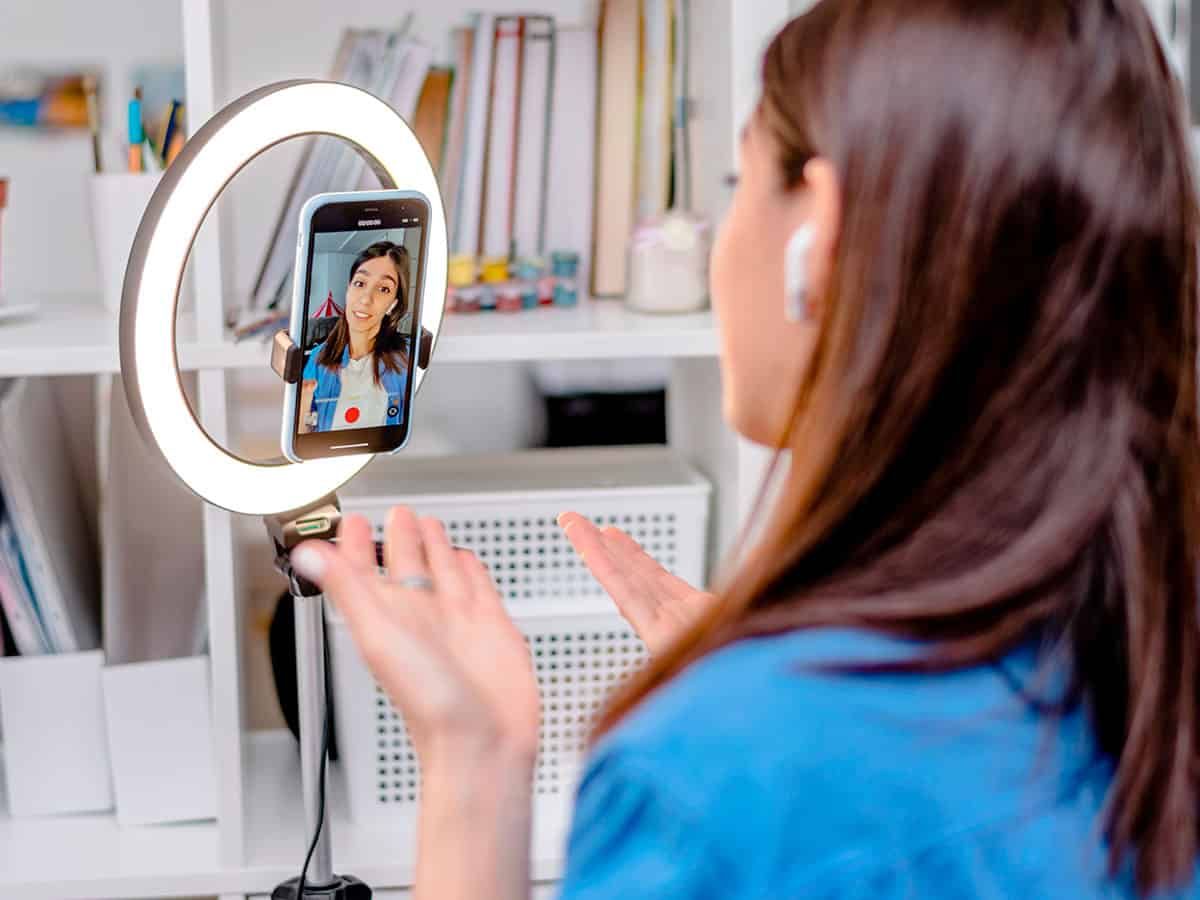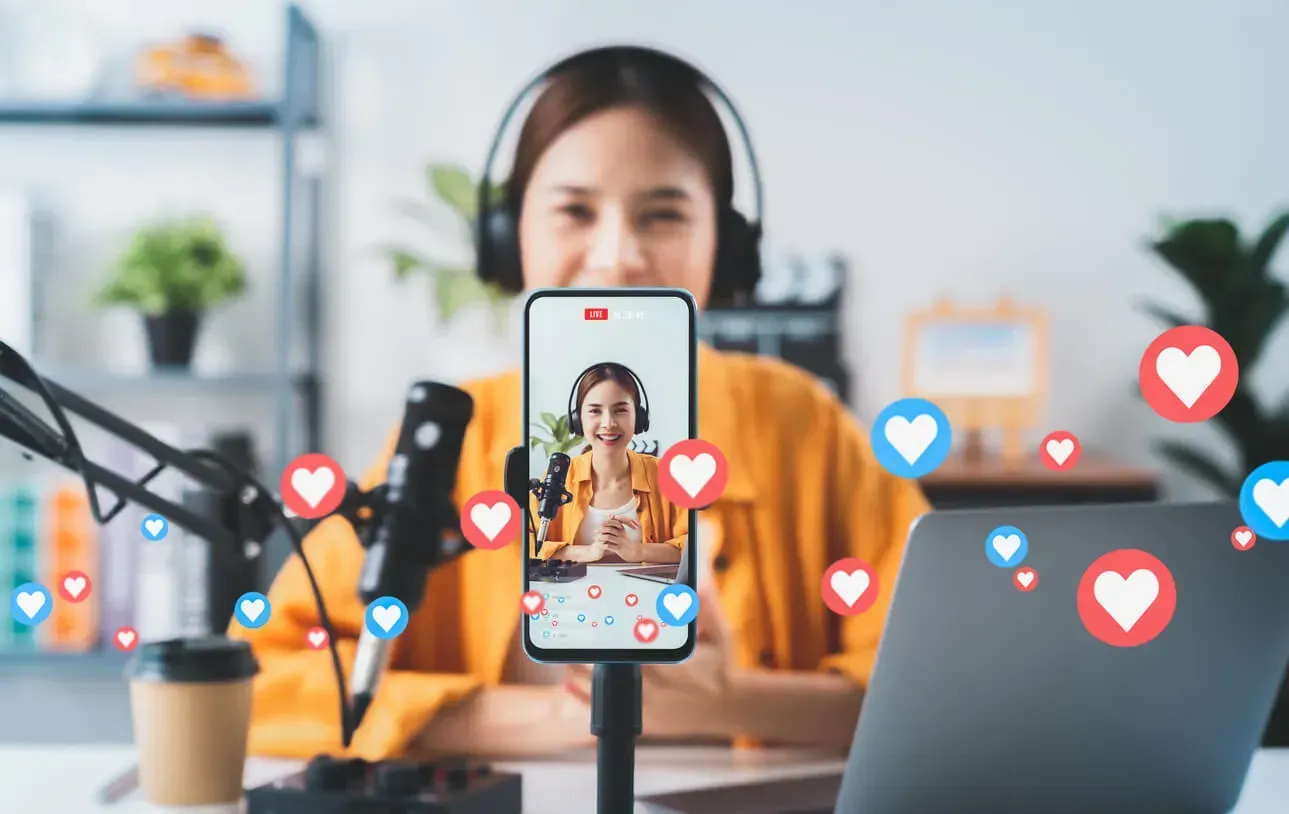From views to purchases : how shoppable videos transform online shopping
It's becoming increasingly clear that shoppable videos are revolutionizing the way you shop online. By integrating interactive elements directly into video content, these tools not only engage you but also drive your purchasing decisions. This seamless experience allows you to transition from watching to buying with just a click, minimizing distractions and enhancing your shopping journey. As brands adopt this innovative approach, understanding its impact on your consumer behavior is imperative for staying ahead in the online marketplace.
Key Takeaways:
- Shoppable videos integrate product links, enabling direct purchases from video content.
- Increased engagement rates are observed as viewers interact with videos, driving conversion.
- Visual storytelling enhances product appeal and helps consumers make informed decisions.
- Personalization in shoppable videos can lead to higher customer satisfaction and loyalty.
- Analytics from shoppable videos provide valuable insights into consumer behavior and preferences.
Understanding Shoppable Videos
Defining Shoppable Videos
Shoppable videos integrate interactive elements that allow viewers to click on products featured within the video, facilitating immediate purchasing. You encounter these videos on various platforms, prominently on social media and e-commerce websites, where the seamless transition from viewing to buying enhances your shopping experience. These videos often include clickable links, tags, or overlays that lead directly to product pages, streamlining the decision-making process.
As a consumer, shoppable videos transform passive viewing into active engagement. Instead of merely watching a product demonstration, you can instantly obtain more information or make a purchase. This innovative format not only captivates your attention but also simplifies your shopping journey, ultimately boosting conversion rates for brands.
History and Evolution of Shoppable Video Content
The concept of shoppable videos originated with early e-commerce efforts, where brands aimed to bridge the gap between content consumption and online shopping. Initially, simple annotations and clickable links on videos were used on platforms like YouTube and Vimeo, laying the groundwork for more sophisticated integrations. Over time, advancements in technology and changes in consumer behavior have significantly enhanced the interactivity and effectiveness of these videos.
With the advent of social media and the rise of platforms such as Instagram and TikTok, shoppable videos have evolved further. Reports show that brands utilizing shoppable content saw a 30% increase in sales conversions. The introduction of advanced analytics tools has allowed you to track engagement and sales metrics, fine-tuning campaigns to better meet your preferences and shopping habits.
Importance in the Digital Marketing Landscape
Shoppable videos hold significant value in the digital marketing landscape, serving as a bridge between storytelling and commerce. For you as a consumer, this format creates an interactive and immersive experience that resonates with modern shopping habits. The visual and dynamic nature of video content grabs attention more effectively than static images, resulting in a 1200% higher share rate on social media platforms.
This innovative approach also allows brands to cater to your preferences by delivering personalized shopping experiences. By analyzing viewer behavior and engagement, brands can tailor their video content to better align with your interests, leading to higher satisfaction and loyalty.
Incorporating shoppable videos into marketing strategies enables brands to stay competitive, respond to consumer behavior shifts, and measure the effectiveness of their campaigns in real time. As a result, you witness a more fluid and enjoyable shopping experience that aligns closely with how you consume content today.
The Mechanics of Shoppable Videos
How Shoppable Videos Work
Shoppable videos operate through an integration of multimedia content and e-commerce functionalities. You watch a video showcasing products, and as these products appear on screen, clickable hotspots or overlays provide additional information and direct purchasing options. This interactive experience streamlines the typical buying process by allowing you to move directly from discovery to purchase with just a few clicks. For instance, a fashion brand's video may feature a model wearing their clothing, and you can click directly on the item to be taken to the product page.
These videos leverage various technologies such as augmented reality, where you might visualize how a piece of furniture fits in your home before buying. Platforms also implement tracking capabilities that analyze user interactions, offering insights into what captures your interest most effectively. Such data enables brands to fine-tune their content strategy, optimizing not only engagement but also conversion rates.
Elements of Effective Shoppable Videos
To create impactful shoppable videos, several components must align seamlessly. Engaging storytelling is vital, as it keeps your attention while integrating product placements organically. Visual appeal plays a significant role; high-quality production, direct product showcases, and clear brand messaging must coexist in the narrative. Additionally, well-placed CTAs (calls-to-action) guide you through the purchase process without interrupting the viewing experience.
Furthermore, personalization can enhance effectiveness—addressing your preferences or previous shopping behaviors makes the video feel more relevant. Utilizing user-generated content can also bolster authenticity, increasing the likelihood that you will trust the brand and make a purchase. Brands that excel in these areas often see higher conversion rates compared to those that do not prioritize these elements.
Platforms and Technologies Driving Shoppable Videos
Various platforms facilitate the creation and distribution of shoppable videos, each with unique features that cater to different audience types. Social media giants like Instagram and TikTok have integrated shopping capabilities directly into their video formats, allowing you to shop without leaving the app. E-commerce platforms like Shopify also offer tools enabling businesses to craft interactive video content. The symbiosis between video content and direct purchasing options has become a standout marketing strategy due to its ability to captivate and convert viewers efficiently.
Emerging technologies, including artificial intelligence and machine learning, further refine these capabilities by analyzing viewer behavior to tailor content. For example, algorithms can suggest products to you based on what other users with similar preferences have purchased, enhancing your shopping experience and increasing sales potential for brands.
Consumer Behavior and Shoppable Videos
The Psychology Behind Impulse Buying
The dynamics of online shopping have shifted significantly, with shoppable videos tapping into the psychological triggers that drive impulse buying. When you watch a video featuring products in action, your emotional response is often heightened, leading to spontaneous purchases. Visual stimuli combined with engaging storytelling can create a sense of urgency and excitement, prompting you to buy immediately rather than think through your decision.
Cognitive biases play a key role in this phenomenon. For instance, the decoy effect might position a more expensive item alongside a mid-range option, making that mid-range product seem like a smarter choice. This tactic can effectively manipulate your perception of value, nudging you toward making a purchase you didn't initially plan on.
How Shoppable Videos Influence Purchase Decisions
Shoppable videos serve as a bridge between inspiration and transaction, directly influencing your buying behavior. By integrating links within the content, these videos simplify the purchasing process, allowing you to buy items in real time as you view them. For example, brands like Nike successfully utilize shoppable videos on platforms like Instagram, enabling you to click and shop with minimal friction.
Studies indicate that consumers are 95% more likely to retain information presented in video format compared to text. This statistic underscores the power of visual content—your recall for the products featured in engaging videos is considerably higher, which directly translates to a greater likelihood of purchase. The seamless experience offered by shoppable videos not only engages you but also reduces the barrier to completing sales.
Demographic Preferences for Shoppable Content
Your preferences for shoppable content can vary significantly by demographic factors such as age, gender, and interests. Younger audiences, especially Gen Z and Millennials, show a pronounced inclination towards video content, with research revealing that over 70% of this group prefers to engage with brands through video on social media. Their comfort with online shopping and mobile devices makes shoppable videos particularly effective in resonating with their lifestyle.
In contrast, older demographics might favor more traditional forms of engagement but are still increasingly adopting video as a tool for shopping. Brands that tailor their shoppable content to meet these varying expectations can maximize their reach and effectiveness across diverse consumer groups.
Understanding these demographic preferences and the nuances in behavior can guide your marketing strategies. You might find that experimenting with different types of shoppable videos—like tutorials for younger audiences or informative product features for older ones—can result in improved engagement and conversion rates.
Case Studies of Successful Shoppable Video Campaigns
- ASOS: ASOS launched a shoppable video campaign that increased its conversion rate by 30%. The videos featured styling tips that led to a 25% boost in the average order value.
- Sephora: Sephora employed shoppable videos in their marketing strategy, resulting in a 40% increase in consumer engagement and a 15% increase in transaction rates.
- Walmart: Walmart’s investment in shoppable videos saw a remarkable 50% increase in sales for featured products within three months of launch.
- QVC: QVC effectively connected audiences with products through live shoppable videos, generating over $1 billion in sales in just one year.
- Nike: Nike's interactive video campaigns led to a 20% increase in customer acquisition, highlighting how shoppable videos can build brand loyalty.
Retail Brands Leveraging Shoppable Videos
Your favorite retail brands are quickly jumping on board the shoppable video trend to enhance customer engagement and drive sales. Companies like Target and Zara have utilized these videos to showcase seasonal collections, allowing customers to click on their desired items directly as they watch. Target’s campaign achieved a 35% increase in clicks-to-cart during product launches, demonstrating the effectiveness of combining visual appeal with seamless purchasing options.
Moreover, brands are focusing on storytelling to connect emotionally with their audience. Shoppable videos that tell a story about the product’s creation or its uses tap into consumer emotions, urging viewers to make a purchase. For example, Gap employed narrative-driven shoppable content, resulting in a 50% increase in video completion rates, effectively driving more viewers to their online store.
Influencer Collaborations and Their Impact
Influencer collaborations in shoppable videos have proven to amplify reach and enhance brand authenticity. By partnering with influencers who align with their brand values, companies are able to tap into established audiences. For instance, a recent collaboration between Revolve and popular fashion influencers yielded a staggering 70% increase in sales during the campaign period, highlighting the persuasive power of trusted voices in online shopping.
These partnerships not only enhance engagement but also generate a sense of urgency, with limited-time offers frequently creating heightened interest among viewers. When influencers showcase products in their everyday lives, they provide relatability that resonates with consumers, pushing them towards instant purchases.
Statistics demonstrate that purchases made through influencer-led shoppable videos are often impulsive, with some audiences converting as quickly as within minutes of viewing. This dynamic emphasizes the compelling effect of relatable influencers in the decision-making process.
Metrics and Outcomes of Successful Implementations
The measurable outcomes of shoppable video campaigns provide valuable insights for brands. Campaigns that utilize shoppable videos typically report improved metrics across the board, including a 200% increase in click-through rates compared to traditional video content. More specifically, brands are seeing engagement rates soar to around 4-5%, which is significantly above the average benchmark for standard video ads.
Furthermore, repeat purchases are notably enhanced by delivering personalized content through shoppable videos. Brands leveraging data analytics are able to create targeted campaigns that cater to specific customer behaviors, resulting in lower customer acquisition costs and higher retention rates.
In-depth analysis reveals that businesses implementing shoppable videos often achieve better ROI than other marketing strategies, with some reporting a return as high as 800% on ads. This demonstrates how well-crafted, engaging, and actionable video content can lead to sustainable business growth.
The Role of Social Media in Shoppable Videos
Social Media Platforms Supporting Shoppable Videos
Many of the leading social media platforms have embraced shoppable videos, recognizing their potential to enhance user engagement and drive sales. Platforms like Instagram, TikTok, and Facebook have introduced features that allow users to tag products directly within videos, streamlining the shopping experience. For instance, Instagram’s Shopping feature enables users to shop for items showcased in posts and stories with just a few taps, effectively converting visual interest into direct purchases.
Moreover, TikTok's integration of shoppable ads capitalizes on its massive user base and viral trends. Brands leverage TikTok challenges and influencer partnerships to create engaging content that not only entertains but also provides a pathway to purchase. This blend of creativity and commerce is reshaping how you interact with products online, making the shopping experience more immersive and interactive.
User-Generated Content and Its Influence
User-generated content (UGC) plays a pivotal role in the success of shoppable videos. You’re likely to trust recommendations from other consumers over traditional advertising; as a result, UGC fosters authenticity and relatability. Videos featuring real customers using products can significantly influence your buying decisions, providing a sense of community and shared experience around brands.
Platforms encourage UGC by allowing users to create and share shoppable videos, often incentivized with contests or features that highlight the best contributions. This strategy not only amplifies brand visibility but also cultivates loyalty among your peer group. You are more inclined to engage with brands that showcase real experiences rather than polished advertisements.
Leveraging UGC, brands establish a connection that resonates with your preferences and lifestyle, often leading to higher conversion rates. A 2022 study found that 79% of consumers say user-generated content highly impacts their purchasing decisions, illustrating the powerful influence that your peers have in driving sales.
The Future of Social Commerce
The trajectory of social commerce points towards even greater integration of shoppable videos, as brands realize the importance of seamless purchasing pathways within social platforms. As mobile shopping continues to dominate, expect improved functionalities that enhance the visual shopping experience. With advancements in augmented reality (AR) and artificial intelligence (AI), brands are increasingly offering virtual try-ons and tailored recommendations that cater directly to your personal tastes.
Emerging technologies promise to make shoppable videos even more interactive, allowing you to experience products in real-time—whether through guided tutorials or live shopping events. The future is shaping up to include content that captivates, informs, and motivates you to make purchases seamlessly during your scrolling experiences.
The potential for growth in social commerce is immense, with predictions indicating that by 2025, social commerce sales could exceed $600 billion, highlighting the increasing importance of integrating your shopping experience with social media interactions.
Integrating Shoppable Videos into E-commerce Strategy
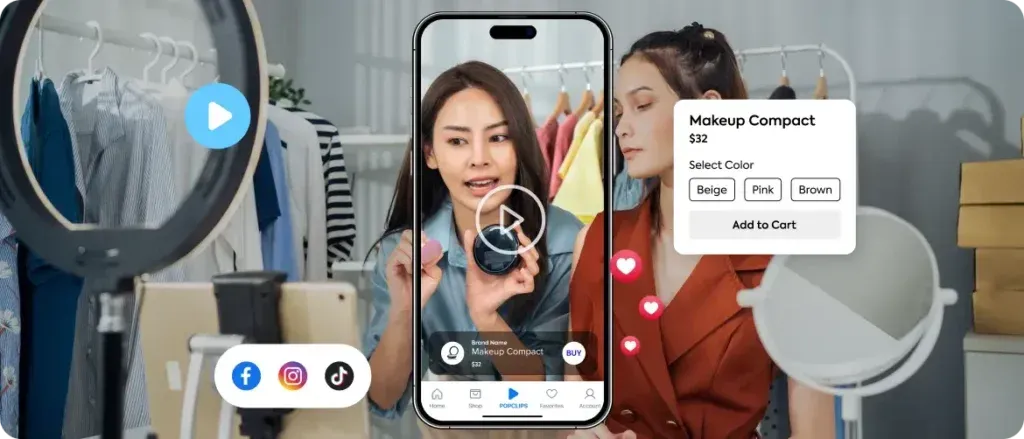
Aligning Shoppable Videos with Brand Messaging
Aligning your shoppable videos with your brand messaging is necessary for creating a cohesive customer experience. Each video should not only showcase products but also reflect your brand's values and voice. For example, if your brand emphasizes sustainability, highlighting eco-friendly products in a setting that portrays their positive environmental impact will resonate with your audience. This alignment builds authenticity and trust, making viewers more likely to engage with your offerings.
Your messaging should be consistent across all platforms. A campaign that utilizes shoppable videos can incorporate storytelling techniques that reflect your brand’s ethos. For instance, showcasing customer testimonials or behind-the-scenes content not only adds a personal touch but reinforces how your products fit into real life, increasing the likelihood of conversion.
Best Practices for Implementation
Effective implementation of shoppable videos involves clear strategies that enhance user experience. Start with high-quality footage that accurately captures your products while also engaging viewers. Use interactive elements such as clickable tags or links that direct users to product pages seamlessly. The video duration should be optimized; studies suggest keeping videos under two minutes ensures maximum viewer retention and keeps interest levels high.
Testing different formats and styles is crucial to determine what resonates best with your audience. For example, if you find that tutorial-style videos outperform traditional product showcases in engagement metrics, prioritize creating more of those. Gathering feedback through audience responses allows for iterative improvements that can significantly boost conversion rates over time.
Measuring Success: KPIs and Analytics
Measuring the success of your shoppable videos requires defining clear KPIs tailored to your business objectives. Key metrics include click-through rates, conversion rates, and average view duration. Analytics tools can provide insights on viewer behavior, allowing you to understand how users interact with your videos. For instance, tracking how many viewers click on product links within the video can directly correlate to sales generated.
Analyzing viewer demographics and engagement patterns also offers valuable insights. If a particular audience segment shows increased engagement with specific products, consider tailoring future content to cater to that demographic. Using A/B testing can further refine your approach, helping you pinpoint what types of shoppable videos perform best within your campaigns.
Measuring the success of shoppable videos can also involve assessing the return on investment (ROI) from your video content. Tracking the sales generated specifically from viewers who interacted with shoppable videos allows you to gauge the financial impact of this strategy, ensuring resources are allocated effectively to maximize yield.
Challenges in Creating Shoppable Videos
Technical and Creative Limitations
Creating shoppable videos presents several technical and creative challenges that can impede their effectiveness. You may encounter limitations in video production tools and software that do not support interactive features. The integration of shoppable elements, like clickable links or embedded product information, can require advanced technology, which might not be available for every brand. Additionally, your team may need specialized skills in video editing and multimedia design to create polished, engaging content that resonates with viewers.
On the creative side, maintaining a balance between entertainment and advertisement can be tricky. A video that is overly promotional may turn off potential customers. Striking the right tone demands careful planning and execution, requiring a deep understanding of your audience's preferences and behaviors. Without a compelling narrative or visual appeal, shoppable videos can easily fall flat, failing to drive conversions.
Market Saturation and Consumer Fatigue
The rise of shoppable videos has led to an oversaturated market where consumers are bombarded with countless options. You might find that your audience is becoming desensitized to these ads, leading to diminished engagement rates. As more brands jump on the bandwagon, the challenge becomes distinguishing your content from a sea of similar offerings. Over time, this saturation can contribute to consumer fatigue, making it harder for your video campaigns to capture attention and achieve ROI.
Moreover, as consumers are exposed to more shoppable content, they may develop a sense of skepticism regarding its authenticity. This fatigue can result in lower click-through rates, as your audience may scroll past shoppable videos in favor of organic or user-generated content that feels more genuine. Finding ways to innovate while breaking through this clutter is imperative for maintaining interest and driving sales.
To turn the tide against consumer fatigue, you must continually experiment with fresh formats, engage in storytelling, and prioritize quality over quantity. Emphasizing the unique aspects of your brand through authentic experiences can rekindle interest and foster lasting connections with your audience.
Addressing Privacy Concerns in Video Marketing
The integration of shoppable videos raises significant privacy concerns that you must navigate carefully. As consumers become more aware of data collection practices, their willingness to engage with interactive content may wane. Ensuring compliance with regulations, such as GDPR and CCPA, is imperative to build trust with your audience. Clearly communicating how their data will be used, stored, and protected can alleviate fears and encourage participation in shoppable experiences.
Furthermore, offering transparent opt-in processes allows you to cultivate a loyal customer base. By providing insights into your practices and empowering users to control their data, you create a safer online shopping environment. Tailoring your messaging to emphasize privacy safeguards can enhance user confidence, increasing the likelihood of participation in your shoppable videos.
Expanding on privacy concerns, it's vital to consider the implications of advanced tracking technologies. While personalizing content based on user behavior can yield impressive results, excessive tracking without clear consent may backfire. Establishing transparent practices is imperative not only to comply with legal standards but also to foster a positive brand reputation among wary consumers.
The Future of Shoppable Videos
Innovations on the Horizon
Emerging technologies are set to reshape shoppable videos, integrating enhanced interactivity and immersive experiences. Augmented reality (AR) will allow viewers to interact with products virtually, trying them on or visualizing how they fit into their lives before purchasing. Brands like Gucci are experimenting with this technology, offering customers a way to see how items look in their own environments.
Additionally, advancements in artificial intelligence (AI) will enable personalized content delivery. By analyzing user behavior and preferences, AI can suggest products that resonate with individual viewers, tailoring shoppable videos to enhance engagement and conversion rates. For instance, platforms like YouTube are already employing AI for targeted advertising, a trend that’s likely to expand into shoppable video content.
Predictions for the Evolution of Online Shopping
Online shopping will increasingly resemble an interactive, social experience, driven by shoppable videos. As platforms prioritize video content, you can expect more retailers to adopt this approach, creating virtual storefronts that engage users through storytelling. A study by eMarketer predicts that video commerce will account for over 20% of all e-commerce sales by 2025, a significant leap from its current standing.
As shoppable videos become mainstream, consumer behavior will evolve towards seeking more immersive experiences, blending social media consumption with shopping. Expect influencers and brands to collaborate on shoppable formats that leverage the trust and authenticity associated with recommendations, reinforcing the connection between content and commerce.
The Potential Shift in Consumer Interaction
Engagement will pivot from passive viewing to active participation, with consumers expecting seamless integration of shopping into their online experiences. This shift represents a transformative opportunity for brands to foster stronger relationships with customers. Platforms will likely introduce features allowing you to customize your viewing experience, such as selecting product variations or viewing additional information in real time.
The rise of shoppable videos can also lead to more community-driven interactions. You might find yourself sharing these videos, allowing friends to engage in the shopping process together. This collaborative approach enhances your shopping experience, making it more social and enjoyable, ultimately driving sales and fostering brand loyalty.
Comparative Analysis: Shoppable Videos vs. Traditional E-commerce
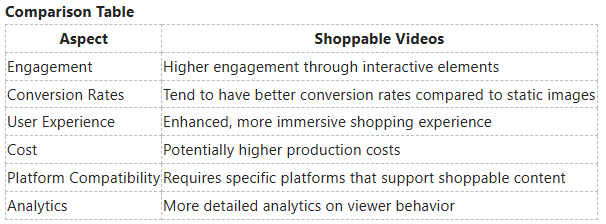
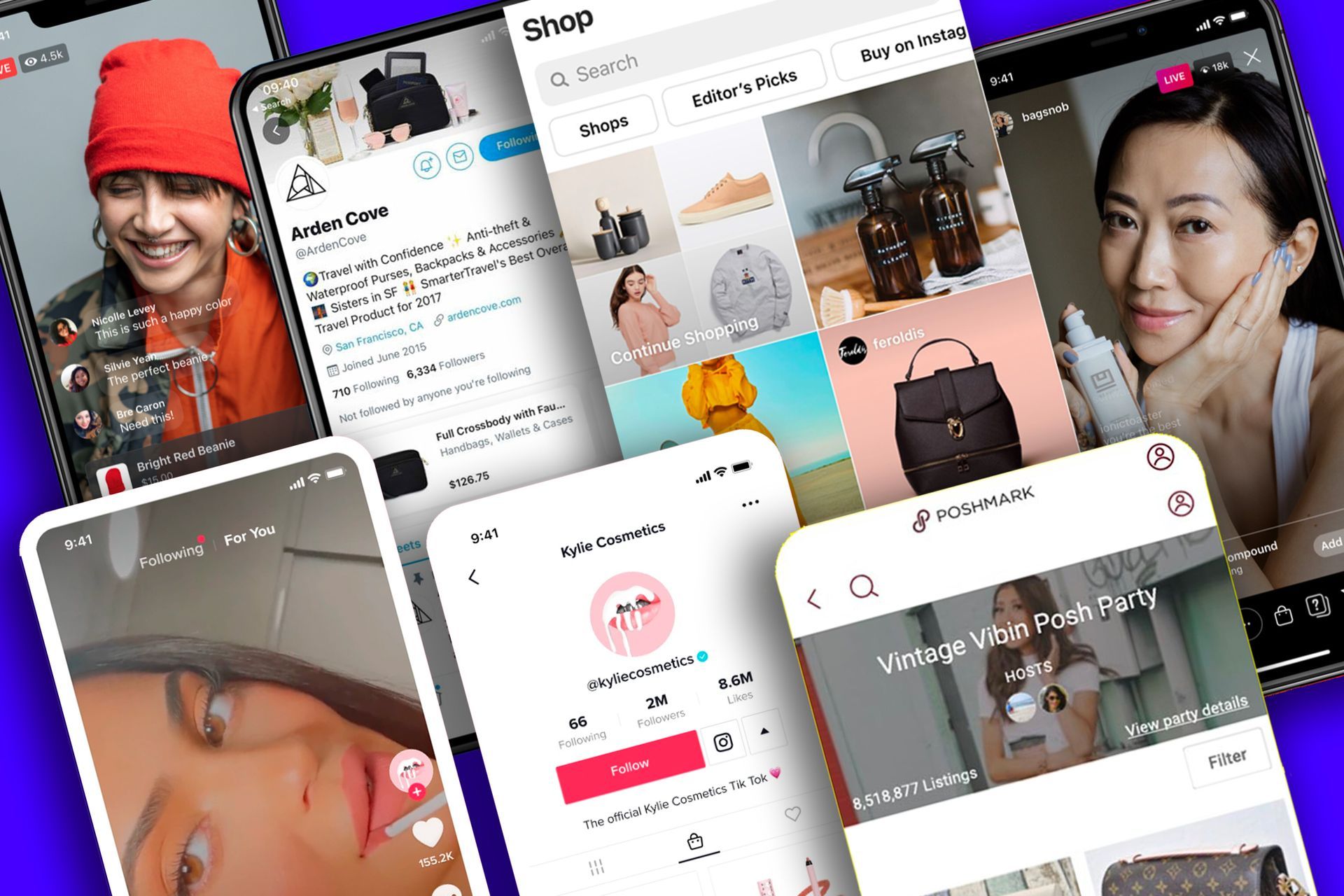
Benefits of Shoppable Videos
Shoppable videos offer significantly increased engagement, as they combine visual storytelling with direct purchasing capabilities. Studies indicate that products showcased in videos are viewed up to 80% more than those in standard catalog listings. This dynamic approach captivates your audience, allowing for a seamless transition from viewing to buying, effectively reducing the clutter often found in traditional e-commerce.
Furthermore, the interactive nature of shoppable videos can enhance the shopping experience. You can easily explore different product options, read descriptions, and make purchases without leaving the video interface, thus creating a streamlined and efficient shopping journey that appeals to today’s fast-paced consumers.
Drawbacks Compared to Traditional Models
While shoppable videos have distinct advantages, they also come with certain drawbacks. Production costs can be substantially higher due to the need for quality video content, scripting, and editing, which may deter smaller businesses from utilizing this model. Additionally, not all platforms support shoppable video functionalities, limiting your options for where to distribute your content effectively.
The depth of product information can sometimes be less comprehensive in videos, leading to potential gaps in details that shoppers typically rely on in traditional online listings. This can hinder informed purchasing decisions, making it vital for brands to balance entertainment with informative content in their shoppable videos.

Consumer Preferences in Different Shopping Environments
Your shopping environment can greatly influence your preference for shoppable videos. In a mobile context, for example, short, engaging videos can capture attention quickly, leading you to impulse purchases that might not occur with traditional online shopping methods. Conversely, when shopping on desktops or tablets, a more detailed browsing experience might be preferred, highlighting the need for a multi-faceted approach in presentation.
Moreover, younger consumers tend to show a stronger affinity for video content across platforms as opposed to older demographics who may lean more toward traditional text-based descriptions. Such insights underscore the importance of targeting your content effectively based on the shopping behavior of your audience segment.

Legal and Ethical Considerations
Copyright Issues and Content Ownership
Shoppable videos often include a blend of content, featuring brand assets, music, and influencers. Ensuring that you hold the necessary licenses for these elements is imperative. Missteps in copyright can result in costly infringements, potentially leaving your brand vulnerable to legal action. For instance, using popular songs without permission could lead to your videos being taken down and monetary penalties imposed by copyright holders.
Additionally, establishing clear ownership rights over the content you create can help mitigate disputes. You should have agreements in place with influencers and creators regarding the usage rights of the videos they produce. This not only protects your investment but also ensures that all parties are on the same page regarding content distribution and monetization.
Transparency and Advertising Regulations
Complying with advertising regulations is vital when using shoppable videos. The Federal Trade Commission (FTC) mandates that influencers disclose any material connections with brands they promote. This includes when they receive compensation for posts or free merchandise. Failing to comply may lead to investigations and penalties, damaging your brand’s credibility.
Adhering to these guidelines fosters trust with your audience, as transparency in advertising can enhance engagement and customer loyalty. Clear disclosures such as “#ad” or “#sponsored” should be visible in your content, ensuring that viewers understand the nature of the promotion. These efforts not only build integrity but also align your brand with best practices within the industry.
The Ethical Implications of Influencer Marketing
The rise of influencer marketing through shoppable videos has ushered in various ethical concerns, particularly around authenticity and the potential for misleading representations. You have the responsibility to ensure that influencers genuinely endorse your products based on their merit rather than financial incentives alone. Misleading endorsements can erode consumer trust, and backlash can be swift in the age of social media.
Furthermore, the portrayal of products in an unrealistic light can contribute to consumer dissatisfaction and disillusionment. Addressing these ethical dimensions requires you to carefully select influencers who align with your brand values and who can present your products genuinely. Engaging with influencers who maintain transparency and integrity will protect both your brand reputation and the trust of your consumers.
The ethical implications of influencer marketing extend beyond mere compliance with regulations. Your approach to partnering with influencers can significantly influence public perception and shape the overall consumer experience. Engaging honest, relatable influencers mitigates the risk of alienating audiences who prioritize authenticity in their purchasing decisions. Thus, cultivating relationships based on mutual respect and transparency will not only enhance the credibility of your shoppable videos but also contribute to a more ethical landscape in digital marketing.
The Importance of A/B Testing in Shoppable Videos
What is A/B Testing?
A/B testing involves comparing two versions of a video to determine which one performs better in terms of viewer engagement and conversion rates. By presenting different variations—such as different calls to action, visuals, or product placements—you gain valuable insights into what resonates most with your audience. This method allows you to make data-driven decisions rather than relying on assumptions about your target market.
In essence, you split your audience in half, showing one segment version A and the other segment version B. With adequate statistical significance, you can measure which version leads to higher purchases or viewer interactions. This process increases the effectiveness of your marketing strategy for shoppable videos, ensuring you're aligning with consumer preferences.
Strategies for Effective Testing
To maximize the impact of your A/B testing, focus on a few key strategies. Start by testing a single element at a time, like the color of your call-to-action button or the placement of product links. This isolation will help you pinpoint what changes contribute to behavioral shifts. Additionally, ensure that your sample size is large enough to yield statistically significant results, avoiding the pitfalls of drawing conclusions from limited data.
Timing matters too; conduct tests over a sufficient duration to account for fluctuating viewer behavior and trends. Use analytics tools to gather data, allowing you to track engagement metrics like average watch time, clicks, and conversions accurately. Some brands have found success by testing multiple video lengths to see which captures viewer attention for longer durations—leveraging results from these experiments can significantly boost conversion rates.
Learning from A/B Testing Results
Analyzing the results of your A/B tests offers a roadmap for future content creation. By reviewing which variations delivery better performance metrics, you can adapt your approach for subsequent shoppable videos. This iterative process enables continuous improvement, ensuring that your content is always optimized for performance. Identifying patterns in viewer preferences can also guide your overall marketing strategy as your brand evolves.
Diving deeper into the data allows you to uncover unexpected insights, such as demographics that respond better to specific visual styles or messaging. Leveraging these findings helps you create tailored experiences that enhance user satisfaction and foster brand loyalty.
The Impact of Shoppable Videos on Brand Loyalty
Building Emotional Connections through Video Content
Shoppable videos offer a unique opportunity to engage your audience on a deeper level. By combining compelling storytelling with visual elements, you can evoke strong emotional responses, making your brand unforgettable. Incorporating real-life testimonials or narratives that resonate with your target demographic enhances the likelihood of creating lasting connections. For example, brands like Nike have effectively used inspirational stories in their videos, which not only showcase products but also cultivate a sense of community and belonging among viewers.
As you leverage humor, aesthetics, or relatable scenarios in your video content, you create memorable experiences that foster brand loyalty. It becomes less about merely showcasing products and more about connecting with your audience’s aspirations and values. This emotional investment often translates into repeat purchases and advocacy, as consumers are more likely to stick with brands that resonate with them.
Retention Strategies Utilizing Shoppable Videos
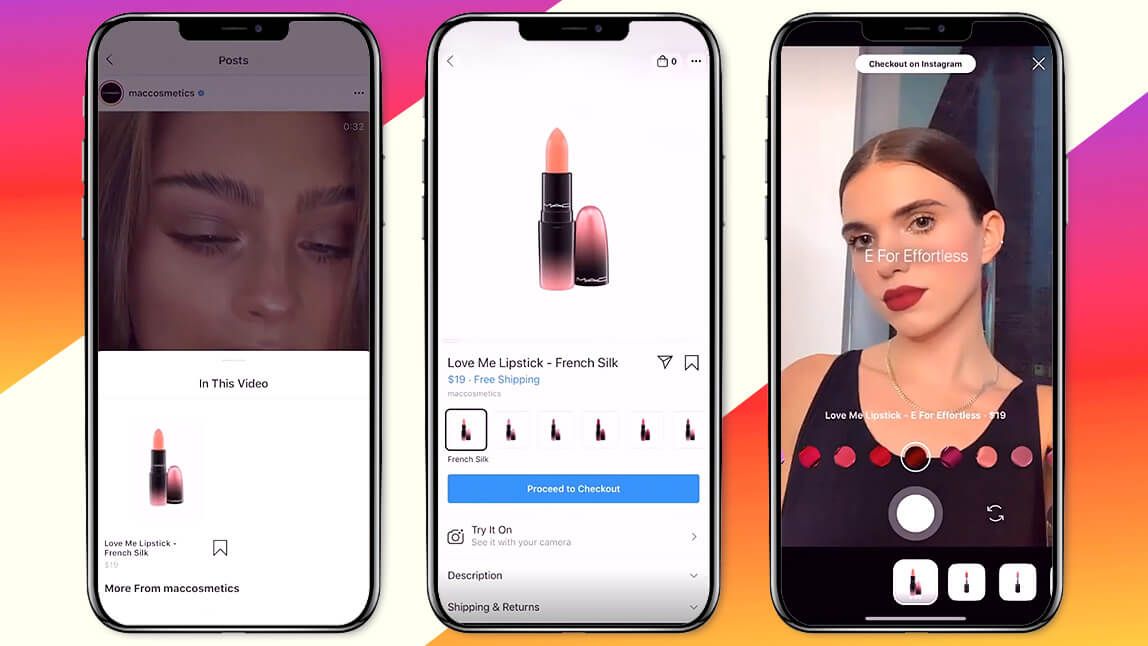
Retention strategies can be significantly enhanced through the integration of shoppable videos. By encouraging viewers to engage through interactive elements, such as polls or clickable product links, you not only maintain their interest but also drive conversions directly within the content. For instance, a beauty brand can create a tutorial showing how to use its latest products, seamlessly allowing viewers to purchase the items as they watch. This interactive experience keeps your audience engaged and returning for more, ultimately boosting customer retention rates.
Utilizing analytics from these videos can also guide your retention strategies. By tracking viewer behavior, you can refine your content and target specific segments more effectively. Whether it’s tailoring promotions based on past purchases or using targeted reminders in your videos, understanding viewer preferences helps you adapt and improve your offerings.
Long-term Effects on Consumer Trust
The effects of shoppable videos extend beyond immediate sales; they also play a vital role in building long-term consumer trust. When you provide valuable, transparent, and engaging content, you position your brand as a reliable source in your industry. Transparency increases your credibility significantly, as consumers feel more informed and empowered in their purchasing decisions. A recent study indicated that brands incorporating shoppable videos reported a 30% increase in perceived trustworthiness among consumers.
As trust deepens, so does customer loyalty. Engaging in honest conversations through shoppable videos allows your audience to see the authentic side of your brand, establishing a stronger emotional connection. When consumers trust your brand, they are less likely to seek alternatives, making repeat business more probable and increasing the lifetime value of each customer.
Cross-Industry Applications of Shoppable Videos
Fashion and Beauty Industries
Fashion and beauty brands have embraced shoppable videos as a transformative tool for online shopping. By integrating product links directly into video content, these brands allow you to seamlessly purchase items showcased in fashion shows, tutorials, and influencer promotions. For instance, clothing retailers like ASOS have successfully utilized this format, achieving a significant increase in conversion rates by allowing viewers to click on garments worn by models. This interactive approach not only enhances your shopping experience but also fosters a deeper connection with the brand's aesthetic.
Beauty brands are also reaping the benefits, with companies like Sephora implementing shoppable videos in product demonstrations and makeup tutorials. This strategy caters to your desire for instant gratification; you see a product application in real-time and can click to purchase the exact products used. The synergy between visual engagement and immediate purchasing options creates a more compelling shopping journey, directly influencing your decisions.
Food and Beverage Sector
The food and beverage industry has started leveraging shoppable videos to enhance consumer engagement and drive sales. Brands like Tasty have incorporated shoppable elements into their recipe videos, allowing you to easily add ingredients to your shopping cart while watching the cooking process. This direct link between content and commerce effectively eliminates the friction often experienced in recipe sourcing, making meal preparation more accessible and enjoyable.
Additionally, beverages brands have found success with shoppable videos by integrating cocktail recipes and food pairing ideas that include direct links to purchase featured products. Coca-Cola, for instance, created engaging content that not only highlights recipes but also allows you to order the necessary ingredients directly through the video, thus simplifying your shopping experience and enhancing brand loyalty.
As consumers increasingly look for convenience and entertainment in their shopping experiences, shoppable videos in this sector provide a perfect blend of inspiration and practical purchasing options. You find yourself not just engaging with the content but also readily transforming culinary ideas into reality.
Technology and Electronics
The technology and electronics sector has recognized the potential of shoppable videos for showcasing new products in action. Companies like Apple utilize this format to present new gadgets through demonstrations, highlighting features while allowing you to purchase directly from the video. This approach not only informs you about the product's capabilities but also builds anticipation, making you more likely to make a purchase.
Another example is Best Buy, which employs shoppable videos to guide consumers through product setups and technical tutorials. Instead of sifting through pages of text or asking for assistance, you can view how a product works and immediately make a buying decision with just a click. This immediate access to information streamlines your purchasing journey, enhancing your confidence in the product you choose.
The technology sector's use of shoppable videos provides a strategic advantage, effectively combining product showcase with direct response marketing. You can experience firsthand how a product fits into your life before committing to a purchase, leading to increased satisfaction and lower return rates.
To wrap up
So, you can see how shoppable videos are revolutionizing online shopping by creating a seamless fusion of entertainment and commerce. This transformation allows you to engage with products in a more dynamic way, eliminating the friction commonly associated with traditional shopping methods. As you interact with these videos, you not only gain a deeper understanding of the product but also make purchasing decisions in real-time, enhancing your overall shopping experience.
As this trend continues to evolve, you should consider the impact of shoppable videos on your buying behavior. Leveraging this innovative format, you can discover new products, enjoy immersive experiences, and streamline your checkout process, making your online shopping more efficient and enjoyable. Embracing shoppable videos can open new avenues for discovering brands and shopping conveniently, shaping how you approach your future purchases.
FAQ
Q: What are shoppable videos?
A: Shoppable videos are interactive video content that allows viewers to purchase products directly within the video. These videos typically include embedded links or buttons that enable viewers to click and buy items featured during the presentation.
Q: How do shoppable videos enhance the online shopping experience?
A: Shoppable videos enhance the online shopping experience by providing an immersive and engaging way for consumers to view products in action. They reduce the steps needed to make a purchase, integrating entertainment with shopping, which can lead to higher conversion rates.
Q: What platforms support shoppable video implementations?
A: Several platforms support shoppable video features, including social media sites like Instagram and TikTok, as well as dedicated e-commerce platforms like Shopify and websites that utilize video hosting services with shoppable capabilities.
Q: Are shoppable videos effective for all types of products?
A: While shoppable videos can be effective for various product categories, they tend to work best for visually appealing items, such as fashion, beauty products, and home decor. The visual nature of these products helps capture viewer interest and drive sales.
Q: How can brands create successful shoppable videos?
A: Brands can create successful shoppable videos by ensuring high-quality visuals, incorporating clear calls to action, and providing authentic content that resonates with their target audience. Additionally, analyzing viewer engagement metrics can help refine future video strategies.










